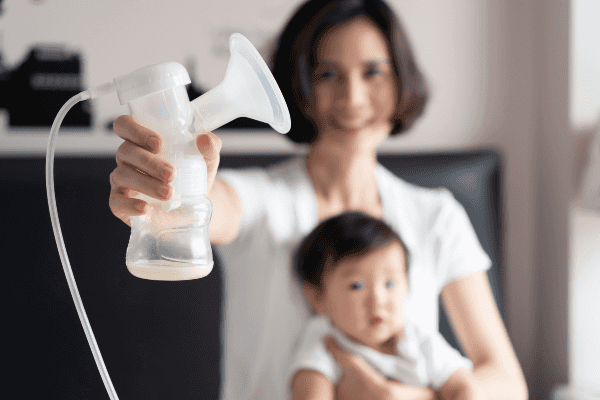
Expert Physiotherapy at Home
Certified physiotherapists visit you at home to provide focused, one-on-one care tailored to your needs. With no travel or waiting rooms, recovery happens in a setting that is comfortable, familiar, and built around your convenience.
Personalised Recovery Programmes
Every treatment plan is designed to suit your condition, goals, and pace. Our physiotherapists follow structured, evolving protocols to ensure consistent progress, with each session aligned to deliver meaningful results.
Trusted Physiotherapists. Real Results.
Our team comprises experienced, background-verified physiotherapists trusted by thousands of families. With a strong focus on safety, reliability, and clinical outcomes, we make recovery at home both effective and reassuring
Patient Testimonials
Portea Physiotherapists for Home Visits
Meet some of our experienced and dedicated healthcare professionals

Dr. Lokesh G
Physiotherapist
Specializations
Experienced in Neurological rehabilitation, Orthopaedic physiotherapy, and Paediatric care
Delivers structured, high-impact treatment plans across neuro, ortho, and paediatrics—ensuring safety, comfort, and measurable recovery at every stage.

Dr. Mohammed Sarwar
Physiotherapist
Specializations
Experienced in Neurological rehabilitation, Adult physiotherapy, and Paediatric care
Combines deep clinical expertise with a compassionate approach, supporting both adults and children through neuro and physical rehabilitation that promotes long-term independence and recovery.

Dr. Nelapati Divya
Physiotherapist
Specializations
Skilled in Orthopaedic rehabilitation, Manual therapy techniques, and Paediatric physiotherapy
Brings a personalised, hands-on approach to healing—combining structural expertise with paediatric sensitivity to restore movement, relieve pain, and improve everyday function.

Dr. Naveen V
Physiotherapist
Specializations
Trained in Pain management, Cardiac and Orthopaedic rehabilitation, Neurological care, and Neural tissue mobilisation
Brings clinical precision and empathy together—designing science-backed recovery protocols for pain relief, nerve mobilisation, and cardio-neuro-ortho rehabilitation across all age groups

Dr. Miloni Savla
Physiotherapist
Specializations
Holds an MPT in Orthopaedics with a focus on Musculoskeletal rehabilitation and strength recovery
Delivers focused, movement-oriented therapy grounded in orthopaedic science—helping patients rebuild strength, restore function, and return to daily life with confidence
Other Cities
Physiotherapy Treatments

what are the different types of spina bifida?
Spina bifida is classified into three main types, each varying in severity:
- Spina Bifida Occulta (Mildest Form): This is the mildest form, often called “hidden” spina bifida, as the defect is covered by skin and may go undetected. Most individuals with this condition do not experience significant symptoms or complications.
- Meningocele (Moderate Severity): This type involves a sac-like protrusion of the meninges (the protective covering of the spinal cord) through the spinal opening. The sac contains cerebrospinal fluid but does not include the spinal cord, and it may cause minor neurological issues.
- Myelomeningocele (Most Severe Form): The most severe form, myelomeningocele occurs when both the meninges and spinal cord protrude through the opening, often leading to significant neurological impairment, including paralysis, bladder and bowel dysfunction, and hydrocephalus (excess fluid in the brain).
what causes spina bifida during pregnancy?
The exact cause of spina bifida is not fully understood, but it is believed to result from a combination of genetic and environmental factors. Some key risk factors include:
- Folic acid deficiency: A lack of folic acid during early pregnancy significantly increases the risk of neural tube defects.
- Genetic predisposition: A family history of neural tube defects can increase the likelihood of spina bifida.
- Maternal health conditions: Conditions like diabetes and obesity may contribute to a higher risk.
- Medications: Certain drugs, such as anti-seizure medications, can interfere with folate metabolism and increase the risk.
- Environmental factors: Exposure to harmful chemicals or high temperatures (such as fever or use of hot tubs) during pregnancy can also be contributing factors.
what are the common symptoms of spina bifida?
The symptoms of spina bifida depend on its severity and location on the spine. Some common complications include:
- Mobility Issues: Weakness or paralysis in the legs can occur, affecting movement and requiring assistive devices such as braces or wheelchairs.
- Bladder and Bowel Dysfunction: Many individuals with spina bifida struggle with urinary and bowel control due to nerve damage.
- Hydrocephalus: The buildup of cerebrospinal fluid in the brain can lead to increased pressure, requiring a shunt to drain excess fluid.
- Orthopedic Problems: Individuals may develop scoliosis, hip dislocations, or joint deformities.
- Cognitive Challenges: Some people with spina bifida, particularly those with hydrocephalus, may experience learning difficulties or delayed cognitive development.
how is spina bifida diagnosed before and after birth?
Spina bifida can often be diagnosed before birth through routine prenatal screening tests:
- Blood Tests: Maternal serum alpha-fetoprotein (MSAFP) test can detect high levels of AFP, which may indicate a neural tube defect.
- Ultrasound: A detailed fetal ultrasound can help identify spinal abnormalities.
- Amniocentesis: If an abnormality is suspected, this test can confirm the diagnosis by analyzing the amniotic fluid.
In some cases, spina bifida may not be diagnosed until after birth, especially in mild forms. A physical examination and imaging tests such as X-rays, MRI, or CT scans can help confirm the diagnosis.
how is spina bifida medically managed throughout life?
While there is no cure for spina bifida, various treatments can help manage symptoms and improve quality of life.
1. Surgical Treatments for Spina Bifida
- Prenatal Surgery: In some cases, fetal surgery can be performed before birth to close the spinal opening and reduce complications.
- Postnatal Surgery: If prenatal surgery is not performed, surgery after birth can help repair the defect and prevent further damage.
- Shunt Placement: For individuals with hydrocephalus, a shunt may be inserted to drain excess cerebrospinal fluid from the brain.
2. Physical Therapy and Rehabilitation
- Mobility training: Exercises and assistive devices help improve movement and strength.
- Occupational therapy: Focuses on enhancing daily living skills and independence.
- Bracing and orthotics: Support devices help individuals maintain posture and mobility.
3. Bladder and Bowel Management Techniques
- Catheterization: Helps manage urinary retention and prevent infections.
- Bowel training programs: Dietary changes and scheduled routines improve bowel control.
- Medications and surgery: In severe cases, interventions like bladder augmentation or nerve stimulation may be needed.
4. Educational Support and Cognitive Therapy
- Special education programs: Help address learning difficulties and enhance cognitive development.
- Speech therapy: Beneficial for individuals experiencing communication challenges due to brain abnormalities.
how can pregnant women prevent spina bifida?
Although spina bifida cannot always be prevented, certain steps can significantly reduce the risk:
- Folic Acid Supplementation: Women of childbearing age should take at least 400 mcg of folic acid daily before and during pregnancy.
- Healthy Lifestyle Choices: Maintaining a balanced diet, avoiding alcohol and smoking, and managing pre-existing conditions like diabetes can lower the risk.
- Medication Management: Consulting a doctor before taking any medication during pregnancy helps minimize harmful effects.
- Regular Prenatal Care: Early and regular check-ups ensure proper fetal development and early detection of potential issues.
how can home physiotherapy help people living with spina bifida?
With the right medical care, therapy, and lifestyle modifications, individuals with spina bifida can lead fulfilling lives. Support from healthcare providers, caregivers, and community resources plays a crucial role in ensuring independence and well-being.
At Portea, we offer personalized home healthcare services to assist individuals with spina bifida in managing their condition effectively. Our team of physiotherapists provide customized rehabilitation programs to improve mobility, enhance daily living skills, and promote independence. Beyond Spina Bifida,
Portea offers comprehensive physiotherapy services, including post-surgical rehabilitation, arthritis management, neuro-rehabilitation, orthopedic care, sports injury recovery, elderly physiotherapy, and respiratory therapy. With a dedicated team and home-based care, we help individuals regain mobility, strength, and independence in the most convenient way possible.
how does long-term care improve quality of life for spina bifida patients?
Spina bifida is a complex condition that requires lifelong management, but early diagnosis and appropriate interventions can significantly improve outcomes. Understanding its causes, symptoms, and treatment options allows individuals and caregivers to make informed decisions. With advancements in medical care, physiotherapy, and assistive technologies, those affected by spina bifida can achieve greater independence and a better quality of life. At Portea, we are committed to providing expert care and support, ensuring that individuals receive the best possible treatment within the comfort of their homes.
faqs
1. Can spina bifida be detected during pregnancy?
Yes, prenatal screening such as ultrasound and blood tests can detect spina bifida. Amniocentesis may confirm diagnosis if abnormalities are found.
2. Does spina bifida always cause disability?
Not always. Mild forms like occulta may cause no symptoms, while severe types can lead to paralysis and neurological complications.
3. Is spina bifida hereditary?
It can be. A family history of neural tube defects may increase the risk, though environmental factors also play a role in development.
4. What is the role of folic acid in prevention?
Folic acid helps proper neural tube development. Taking 400 mcg daily before and during pregnancy greatly reduces spina bifida risk.
5. Can people with spina bifida live independently?
Yes, with proper medical care, therapy, and support systems, many individuals with spina bifida lead independent, active, and fulfilling lives.
Doctor Consultation
Nursing
Physiotherapy
Trained Attendant
Elder Care
Mother & Baby Care
Lab Tests
Medical Equipment
Speciality Pharma
Critical Care





